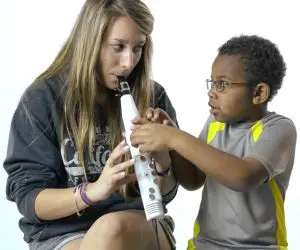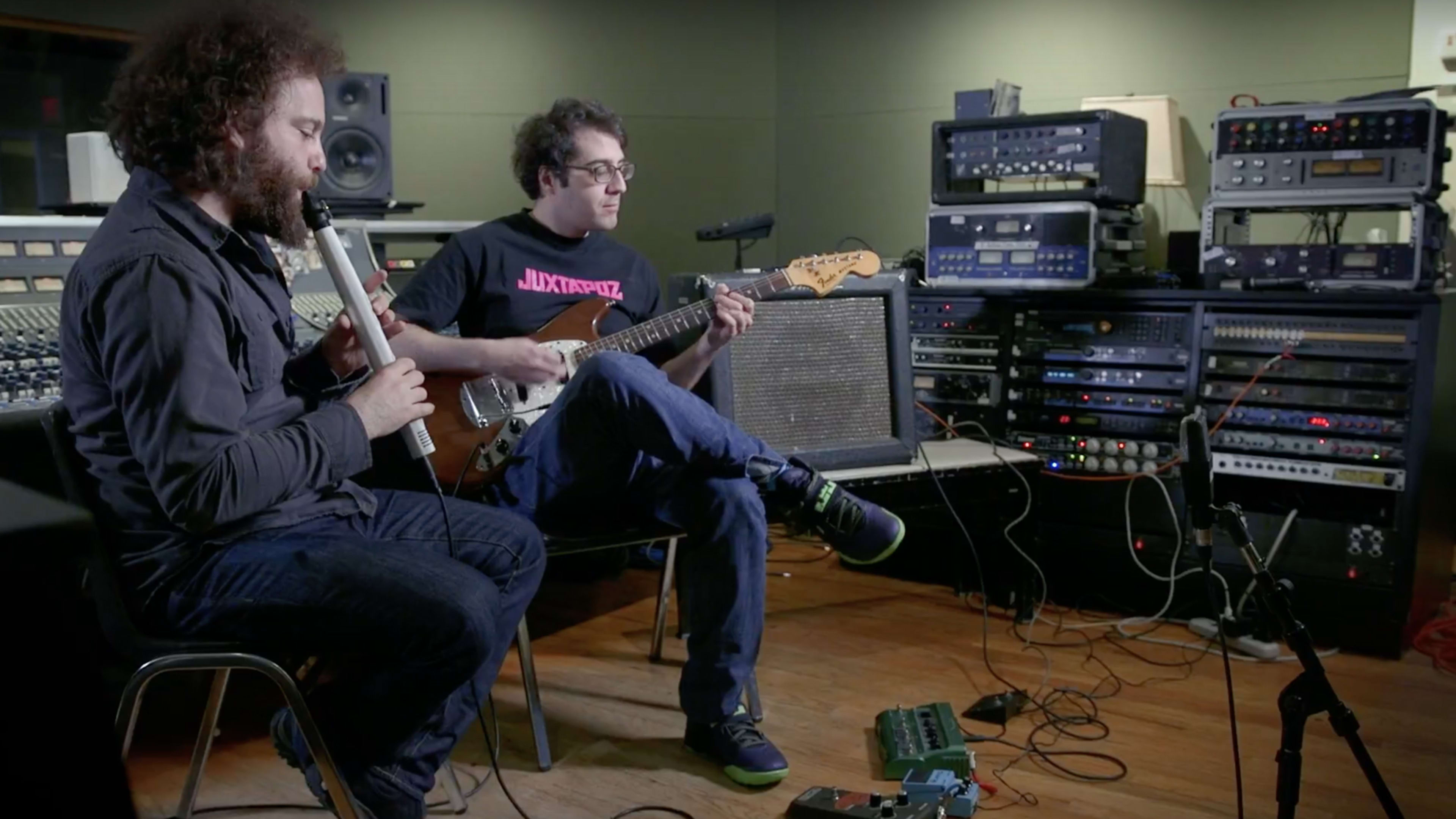Technology entrepreneur Fen Trias loved his nine-year-old son’s choice to take up the clarinet, but even a devoted dad struggles with the relentless, tortured squeals and squawks that come with learning a woodwind.
“It was painful for everybody involved,” Trias says in an interview with Fast Company. “I would say, ‘Oh, it sounds great,’ but he knew I was lying. He was embarrassed and that became an obstacle.”
Last year, looking to spare parents’ ears and students’ egos, Trias and saxophonist Joel Edinberg crowdfunded the invention of the Vindor ES1, raising $23,000 in 19 days. Shaped like a 16-inch recorder and made of molded plastic, the digital instrument replicates the experience of playing a woodwind, minus those awkward, out-of-tune notes. The Vindor replaces difficult-to-cover holes with simple touchpads and, while the fingerings mirror those of a sax, it can be can be programmed to work like a clarinet, recorder, and more.

With their Boston-based company, Vindor Music, Trias and Edinberg aim to eliminate obstacles holding beginners back. The Vindor goes on sale in May for $219, which beats shelling out $300 or more to rent a sax for a year. The Vindor ES1 comes with a headphone jack so practice space isn’t an issue (no need to hide in the laundry room while you repeatedly murder those scales). The pair tried to predict every disincentive that might prevent a kid from joyfully jamming away. Then a student at Floris Elementary School in Fairfax County, Virginia, opened their eyes to their instrument’s full potential.
“For us, this is about increasing accessibility,” Edinberg says. “But we never anticipated all the ways the Vindor might allow people to play, how it might be adapted for individuals with special needs until two teachers came to us in search of a way to help a student they just couldn’t help.”
Music instructors Nancy Fox and Rebecca Murphy have a second grader at Floris who is missing her pinky and has limited mobility with her middle and ring fingers on her right hand. The school has an adaptable recorder that makes fingerings simpler, but it can’t accommodate the student’s needs. For a while, it looked like the elementary schooler wouldn’t be able to join her peers on the recorder. But through Edinberg’s aunt, who works at Floris, Fox and Murphy reached out to Vindor hoping for a solution. The problem intrigued Edinberg.
“A really cool part about the Vindor is that all the keys are digital so we can program the touchpads anyway that we want,” he says. “We are programming her an instrument for what I would call a left-hand preference, meaning she can use her left-hand pinky on touchpads to compensate for what she can’t do with her right hand. We don’t need to make a whole new instrument for her. We can just write some extra code they can download and suddenly she can participate with her friends in class.”
If the experiment works, Fox would like to explore how the Vindor a range of populations who struggle with music classes.
“At school, we have five boys who are in a self-contained class for autism, and I could see them using these where they just can’t use recorders,” Fox said. “A few of them don’t speak, so giving them a voice through an instrument could be amazing.”

As a music startup, Vindor dreams of putting its instrument in shops from coast to coast. But Edinberg knows word of mouth typically turns a musician on to a new instrument. This is why he and Trias are currently working with a trio of rock and jazz players—Moon Hooch’s Mike Wilbur, Lettuce’s Ryan Zoidis, and Too Many Zooz’s Leo Pellegrino—as endorsers. But they also know inroads into a school system could lead to a huge spike in exposure. The company is looking for both music and STEM programs to partner with and would like to expand work with special needs programs. If Vindor is to become profitable, both established professionals and fourth-grade novices need to love it.
Of course, first the Vindor ES1 needs to prove its usefulness.
“We need to get it [to the student],” Edinberg said. “But having so much enthusiasm around the idea, from the teachers and administration, is an encouraging start.”
Recognize your brand’s excellence by applying to this year’s Brands That Matter Awards before the early-rate deadline, May 3.
